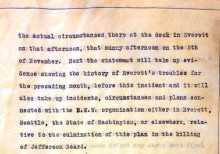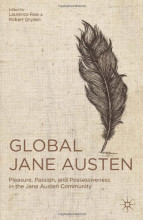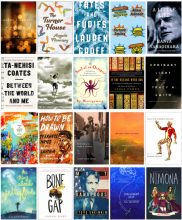Lisa Campbell
Library Blogs
Showing 1321 - 1330 of 1968 items

Over the past few years, the University of Michigan Library has progressively updated and enhanced the way we manage our subject, course, and specialized information guides with Springshare's LibGuides product. This post talks about the various customizations and integrations we've made along the way.

The Flamethrowers is an immersive novel about art and motorcycles. Fans of Patti Smith’s memoir Just Kids will be drawn to this story of an emerging artist in a scene that swallows the reader whole.

Tasha Alexander's mystery series features an unconventional Victorian widow, Lady Emily Ashton. In this, the third book in the series, a murder investigation leads Emily to the cafes and glittering ballrooms of 1890s Vienna.

On November 5th, 1916, the town of Everett, WA, witnessed a violent confrontation between a citizens’ militia hostile to labor unions and a group of Industrial Workers of the World members sailing into the town’s port to support local workers on strike. The Labadie Collection has secured a new set of archival documents about the Everett Massacre to be available to researchers.

Global Jane Austen is a collection of essays that examines the relationship between Austen’s admirers and her works, all over the world. It includes articles about websites and works of fan fiction devoted to her and her characters, adaptations of her works, the tourist industry in the places where she lived, and responses to her novels in non-English speaking countries.

We just hosted our annual donors' reception in the newly renovated space of the Taubman Library last Thursday! As always, it was a great opportunity to express our gratitude to all our friends for having supported the University of Michigan Library throughout the years.

The Nation Book Award Shortlist, announced today, recognizes the year's top 20 works of fiction, nonfiction, poetry, and young adult literature.

In an upcoming LTT blog post (hopefully, before the end of the calendar year), we will discuss U-M Library's process of enabling page insertions to Google volumes for our HathiTrust Digital Library.

A beautifully-written historical novel, with some fantasy elements, about a young man, born in the bell tower of a Swiss mountain village in the eighteenth century, who grows up with a beautiful singing voice and an extraordinary sense of hearing. He falls in love with a young woman from a wealthy family, but he has a secret he keeps from the woman he loves.
•
This past month was filled with FIFA across the board, with FIFA 15 being played over twice as much as any other game in our collection. Other new fan favorites also made the list, including Bloodborne and Dragon Age. And not one, but two copies of Super Smash Bros. Melee made the list this month, showing the lasting popularity of the game on campus.